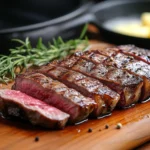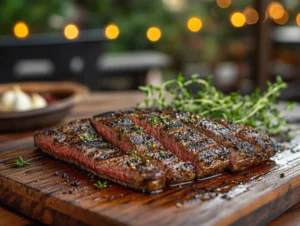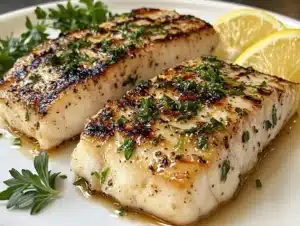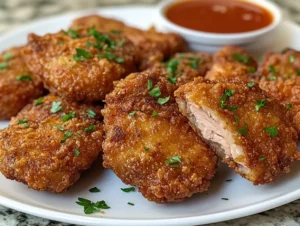Table of Contents
There’s something truly magical about cooking with elk backstrap. I remember the first time Eric brought home this prized cut after a hunting trip with his uncle in Montana. Standing in my little yellow farmhouse kitchen, I felt equal parts excitement and intimidation. What if I overcooked this beautiful piece of meat? What if my elk backstrap recipe didn’t do justice to such a special ingredient?
If you’ve ever felt that same mix of emotions when facing a premium cut of game meat, I’m right there with you. After years of experimenting (and yes, a few memorable mistakes!), I’ve perfected five different ways to prepare elk backstrap that highlight its incredible flavor and buttery texture.
Why You’ll Love This Elk Backstrap Recipe
Trust me when I say elk backstrap is a true gift in the kitchen. Unlike some game meats that can be challenging to work with, backstrap is the filet mignon of elk – incredibly tender, mild in flavor, and versatile enough to shine in multiple preparations.
What makes these elk backstrap recipes special is their approachability. Even if you’re new to cooking game meat, these methods are designed to give you consistent, delicious results. Plus, elk is leaner than beef, making it a healthier red meat option that still delivers that satisfying, rich flavor we all crave.
What is Elk Backstrap?
Before we dive into the recipes, let’s talk about what makes backstrap special. The backstrap is the premium cut that runs along both sides of the spine from the neck to the hindquarters. It’s essentially the elk’s loin, comparable to a beef tenderloin or pork loin.
What makes backstrap so prized is its tenderness. Since these muscles don’t get much exercise, the meat has minimal connective tissue, resulting in a melt-in-your-mouth texture when cooked properly. The key phrase here is “when cooked properly” – because of its leanness, backstrap can quickly go from perfect to overdone.
Ingredients for Basic Elk Backstrap Recipe
For the basic preparation (which becomes the foundation for all five cooking methods):
- 1-2 pounds elk backstrap
- 2 tablespoons olive oil
- 2 tablespoons unsalted butter
- 4 cloves garlic, smashed
- 2-3 sprigs fresh thyme
- 2 sprigs fresh rosemary
- 1 tablespoon kosher salt
- 2 teaspoons freshly ground black pepper
- Optional: 1 tablespoon Worcestershire sauce
Substitution Tips: No fresh herbs? Substitute with 1 teaspoon each of dried thyme and rosemary for a fragrant herbal blend. Venison backstrap works beautifully as a substitute for elk in these recipes, making my venison cube steak recipes a great alternative if you can’t source elk.
Timing
- Prep Time: 15 minutes
- Marinating Time: 1-4 hours (optional but recommended)
- Cook Time: Varies by method (10-30 minutes)
- Total Time: Approximately 1.5-5 hours (including optional marinating)
5 Delicious Ways to Cook Elk Backstrap
Method 1: Pan-Seared Elk Backstrap with Garlic Butter
This is my go-to backstrap elk recipe for weeknight dinners when I want something special but don’t have hours to spend in the kitchen.
Ingredients:
- Basic elk backstrap recipe ingredients
- 2 additional tablespoons butter for basting
Steps:
Season generously: Rub the backstrap with olive oil, then season liberally with salt and pepper.
Heat your skillet: Heat a cast-iron skillet over medium-high heat until very hot (about 2-3 minutes).
Sear the meat: Add 1 tablespoon olive oil to the hot pan, then carefully place the backstrap in the skillet. Sear for 2-3 minutes without moving it to develop a beautiful crust.
Flip and add aromatics: Turn the backstrap over and add butter, garlic, and herbs to the pan. As the butter melts, tilt the pan slightly and use a spoon to baste the meat with the herbed butter continuously.
Check temperature: Cook until the internal temperature reaches 125-130°F for medium-rare (approximately 3-4 more minutes, depending on thickness). Remember, elk is lean and best enjoyed medium-rare!
Rest: Remove from heat and let rest on a cutting board for at least 5-10 minutes before slicing against the grain.
The smell of garlic and herbs sizzling in butter while you’re basting that beautiful piece of backstrap is pure kitchen bliss! This method gives you a restaurant-quality meal in under 30 minutes.
Method 2: Herb-Crusted Roasted Elk Backstrap
When Sunday dinner calls for something impressive, this herb-crusted version is my family’s favorite.
Additional Ingredients:
- ¼ cup fresh herbs (mixture of parsley, thyme, and rosemary), finely chopped
- 2 tablespoons Dijon mustard
- ¼ cup breadcrumbs
- 2 tablespoons grated Parmesan cheese
Steps:
Prepare the backstrap: Follow steps 1-2 from Method 1.
Create herb crust: Mix chopped herbs, breadcrumbs, and Parmesan in a shallow dish. Spread Dijon mustard over the backstrap, then roll it in the herb mixture, pressing gently to adhere.
Roast: Preheat oven to 400°F. Place the herb-crusted backstrap on a rack set over a baking sheet. Roast for approximately 15-20 minutes, or until internal temperature reaches 125-130°F.
Rest and serve: Let rest for 10 minutes before slicing.
This method creates a beautiful presentation with the golden herb crust contrasting against the rosy interior of the meat. It’s become our Christmas Eve tradition!
Method 3: Grilled Elk Backstrap with Coffee Rub
During summer months, this grilled version with coffee rub is absolutely perfect for outdoor entertaining.
Additional Ingredients:
- 2 tablespoons finely ground coffee
- 1 tablespoon brown sugar
- 1 teaspoon smoked paprika
- ½ teaspoon cayenne pepper (adjust to taste)
- 1 tablespoon olive oil
Steps:
Create coffee rub: Combine coffee, brown sugar, smoked paprika, cayenne, 1 teaspoon salt, and 1 teaspoon black pepper in a small bowl.
Prepare backstrap: Rub the backstrap with olive oil, then coat generously with the coffee rub. Let sit at room temperature for 30 minutes.
Preheat grill: Set up grill for direct cooking over medium-high heat (about 400-450°F).
Grill the backstrap: Place the backstrap on the hot grill and cook for 3-4 minutes per side, turning once, until internal temperature reaches 125-130°F for medium-rare.
Rest and slice: Let rest for 10 minutes before slicing against the grain.
The coffee rub creates an amazing crust that complements the natural flavors of the elk perfectly. This has become Eric’s signature dish when we have friends over for summer barbecues!
Method 4: Sous Vide Elk Backstrap with Rosemary and Garlic
For the most foolproof, melt-in-your-mouth tender results, sous vide is the way to go.
Additional Equipment:
- Sous vide immersion circulator
- Large pot of water
- Vacuum sealer or ziplock bags
Steps:
Set up sous vide: Preheat water bath to 129°F for medium-rare.
Season backstrap: Rub backstrap with olive oil, salt, and pepper.
Bag it: Place backstrap in vacuum bag or ziplock bag (using water displacement method to remove air). Add garlic cloves, rosemary, thyme, and a tablespoon of butter to the bag.
Cook: Submerge sealed bag in water bath and cook for 2 hours.Sear: After sous vide cooking, pat the backstrap dry with paper owels. Heat a cast-iron skillet until smoking hot, add a tablespoon of oil, and sear the backstrap for 30-45 seconds per side.
Slice and serve: Rest for 5 minutes, then slice against the grain.
This method is my secret weapon for entertaining because it’s impossible to overcook the meat. I can have everything ready ahead of time and just do the final sear when guests arrive.
Method 5: Marinated and Slow-Roasted Elk Backstrap
When I have more time and want to infuse the backstrap with deep flavors, this marinade and slow-roast method is unbeatable.
Marinade Ingredients:
- ½ cup red wine (something you’d drink!)
- ¼ cup olive oil
- 2 tablespoons balsamic vinegar
- 4 cloves garlic, minced
- 1 tablespoon soy sauce
- 1 tablespoon maple syrup or honey
- 2 sprigs fresh rosemary
- 2 sprigs fresh thyme
- 1 teaspoon black pepper
Steps:
Marinate: Combine all marinade ingredients in a zip-top bag. Add the backstrap, seal, and refrigerate for 4-24 hours (turning occasionally).
Prepare for roasting: Preheat oven to 275°F. Remove backstrap from marinade, pat dry, and season with additional salt and pepper.
Sear: Heat a cast-iron skillet over high heat. Add 1 tablespoon oil and sear the backstrap on all sides until nicely browned (about 1 minute per side).
Slow roast: Transfer the skillet to the oven and roast until internal temperature reaches 125-130°F (approximately 20-30 minutes, depending on thickness).
Rest: Let rest for 15 minutes before slicing.
This method transforms the elk backstrap into something that tastes like it came from a high-end restaurant. The marinade helps to further tenderize the meat and infuse it with complex flavors.
Cooking Tips for the Perfect Elk Backstrap
If there’s one thing I’ve learned after cooking dozens of elk backstrap recipes, it’s that respecting this cut’s natural properties leads to the best results:
Don’t overcook: Elk is lean, so medium-rare (125-130°F) is ideal. Cooking past medium will result in dry, tough meat.
Rest the meat: Always allow the backstrap to rest after cooking. This redistributes juices throughout the meat for optimal tenderness.
Slice against the grain: Cut perpendicular to the direction of the muscle fibers for the most tender bite.
Temperature matters: Starting with room-temperature meat ensures more even cooking. Remove from refrigerator 30-45 minutes before cooking.
Proper seasoning: Don’t be shy with salt! Properly seasoned game meat tastes infinitely better than underseasoned.
A Little Story from My Kitchen
Last hunting season, Eric surprised me with the most beautiful elk backstrap I’d ever seen. I decided to use it for a special dinner with my parents, who were visiting from Virginia. My dad has always been skeptical about game meat, claiming it was “too gamey” (a pretty common concern, I’ve found).
I chose the herb-crusted method, paired it with my 7-layer taco salad recipe (a strange pairing, I know, but it was Dad’s favorite!), and waited nervously as he took his first bite.
His eyes widened, and he immediately asked, “This is elk? Really?” By the end of dinner, he was asking Eric when they could go hunting together. It was one of those beautiful moments when food bridges gaps and creates connections – exactly what cooking is all about for me.
Nutritional Information
Elk meat is incredibly nutritious, which is another reason I love cooking with it:
- Lower in fat and calories than beef
- Higher in protein (approximately 31g protein per 4oz serving)
- Rich in iron, phosphorus, and zinc
- Excellent source of B vitamins, especially B12 and B6
- Offers a higher omega-3 content than most red meats, making it a heart-smart choice
- No antibiotics or hormones (assuming wild-harvested)
A 4-ounce serving of elk backstrap contains approximately:
- 145 calories
- 1.5g fat
- 31g protein
- 70mg cholesterol
- 0g carbohydrates
Healthier Alternatives
Looking to make these elk backstrap recipes even healthier?
- Reduce sodium: Cut salt in half and add more herbs for flavor
- Skip the butter: Use only olive oil for a dairy-free option
- Paleo option: Omit breadcrumbs in the herb crust and use almond flour instead
- Low-carb version: Skip the sugar in the coffee rub and use a sugar substitute or omit altogether
- Heart-healthy swap: Use avocado oil instead of butter for basting
Serving Suggestions
The beauty of elk backstrap is how well it pairs with both rustic and elegant side dishes:
Rustic Pairings:
- Roasted root vegetables with thyme
- Albers cornbread with honey butter
- Garlic mashed potatoes with chives
- Sautéed mushrooms with fresh herbs
Elegant Accompaniments:
- Wild rice pilaf with dried cranberries and toasted pecans
- Roasted asparagus with lemon and Parmesan
- Sweet potato puree with maple and cinnamon
- Wilted spinach with garlic and pine nuts
For wine pairings, I recommend a medium-bodied red with some fruit forward characteristics: Pinot Noir, Merlot, or a Rhône blend all work beautifully with elk.
Common Mistakes to Avoid
Over the years, I’ve made plenty of mistakes with elk backstrap. Let me help you avoid them:
Overcooking: This is the number one sin with backstrap! Remember that carryover cooking will raise the temperature another 5-10 degrees during resting.
Under-seasoning: Game meat benefits from proper seasoning. Don’t be afraid of salt – it helps bring out the meat’s natural flavors.
Skipping the rest period: Cutting into the meat immediately after cooking causes all those flavorful juices to spill out onto your cutting board instead of redistributing through the meat.
Cutting with the grain: Always slice perpendicular to the muscle fibers for the most tender bite.
Using strong marinades: Backstrap is already tender and has a delicate flavor. Overpowering marinades can mask its natural goodness.
Storing & Reheating Tips
While elk backstrap is best enjoyed fresh, leftovers can still be wonderful if handled properly:
Storage:
- Refrigerate leftovers within 2 hours of cooking
- Store in an airtight container for up to 3 days
- Freeze sliced, cooked backstrap for up to 2 months, wrapped tightly in freezer paper and placed in a freezer bag
Reheating:
- Gently reheat slices in a pan with a little butter over low heat
- Wrap in foil and warm in a 250°F oven until just heated through
- For best results, slice leftovers cold and serve at room temperature in sandwiches or salads
I actually love using leftover backstrap in my cottage cheese chips recipe for a high-protein snack, or thinly sliced on a sandwich the next day.
FAQs
How do I know when elk backstrap is done cooking?
For backstrap elk recipes, a meat thermometer is your best friend. For medium-rare (recommended), look for an internal temperature of 125-130°F. The meat will be rosy pink in the center.
What’s the difference between elk backstrap and tenderloin?
While both are prized cuts, the backstrap runs along the spine outside the ribcage, while tenderloin is located inside the abdominal cavity. Backstrap is generally larger and slightly less tender than tenderloin, but both are excellent when prepared properly.
Can I substitute venison in this best elk backstrap recipe?
Absolutely! Venison backstrap works beautifully with all these cooking methods. You might find venison has a slightly stronger flavor profile, but the cooking techniques remain the same.
Final Thoughts
There’s something deeply satisfying about preparing elk backstrap properly – honoring the animal and the hunt by creating something truly delicious. Whether you harvested the elk yourself or purchased it from a specialty butcher, these elk backstrap recipes will help you make the most of this special cut.
I hope these five methods inspire you to get creative in your own kitchen. Remember, cooking should be an adventure, not a source of stress. Start with the pan-sear method if you’re new to cooking game meats, and work your way up to the more complex preparations as your confidence grows.
I’d love to hear which elk backstrap recipe becomes your favorite! Drop me a comment below or tag me in your culinary creations on social media. Happy cooking!
Print
Elk Backstrap Recipe: 5 Delicious Ways to Cook This Tender Cut
- Total Time: 35 minutes
- Yield: 4 servings 1x
- Diet: Gluten Free
Description
Ingredients
For the basic preparation (which becomes the foundation for all five cooking methods):
- 1–2 pounds elk backstrap
- 2 tablespoons olive oil
- 2 tablespoons unsalted butter
- 4 cloves garlic, smashed
- 2–3 sprigs fresh thyme
- 2 sprigs fresh rosemary
- 1 tablespoon kosher salt
- 2 teaspoons freshly ground black pepper
- Optional: 1 tablespoon Worcestershire sauce
Instructions
Steps:
-
Season generously: Rub the backstrap with olive oil, then season liberally with salt and pepper.
-
Heat your skillet: Heat a cast-iron skillet over medium-high heat until very hot (about 2-3 minutes).
-
Sear the meat: Add 1 tablespoon olive oil to the hot pan, then carefully place the backstrap in the skillet. Sear for 2-3 minutes without moving it to develop a beautiful crust.
-
Flip and add aromatics: Turn the backstrap over and add butter, garlic, and herbs to the pan. As the butter melts, tilt the pan slightly and use a spoon to baste the meat with the herbed butter continuously.
-
Check temperature: Cook until the internal temperature reaches 125-130°F for medium-rare (approximately 3-4 more minutes, depending on thickness). Remember, elk is lean and best enjoyed medium-rare!
-
Rest: Remove from heat and let rest on a cutting board for at least 5-10 minutes before slicing against the grain.
- Prep Time: 15 minutes
- Cook Time: 20 minutes
- Category: Main Course
- Method: Pan-Searing
- Cuisine: American
Nutrition
- Serving Size: 4 ounces
- Calories: 145
Keywords: elk backstrap recipe, tender elk recipes, how to cook elk backstrap, wild game cooking, medium-rare elk backstrap, pan-seared elk, grilled backstrap, herb-crusted elk


